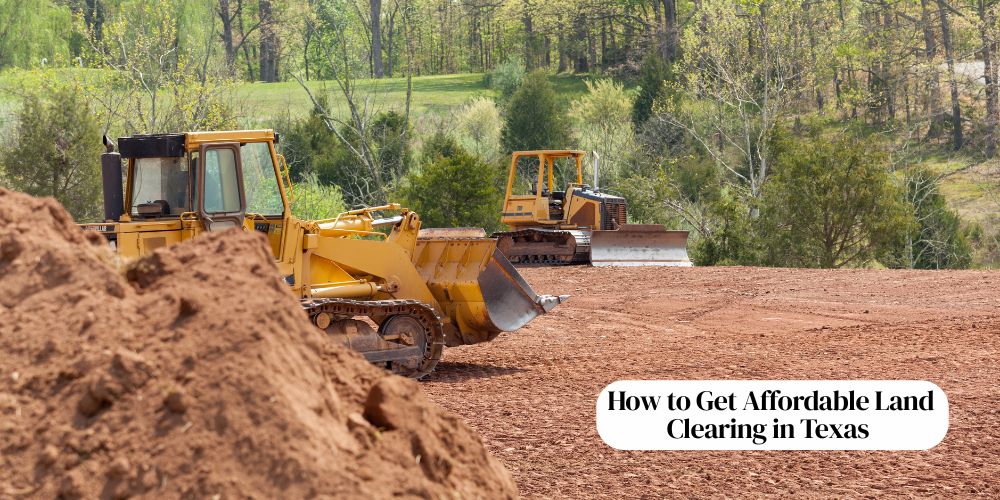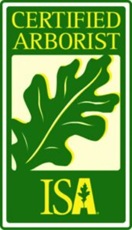Purchasing land in Texas opens the door to new projects, but before you pour concrete, set up fences or plant hay, you must tackle the dense brush, stubborn stumps and crowded cedar trees that cover lots in San Antonio, Boerne and across the Hill Country. Clearing this growth first ensures everything else can proceed without delay. Getting affordable land clearing services you can count on matters because going over budget early on often leads to bigger cost problems down the line.
If you save a few thousand dollars on clearing but then spend weeks fixing poor grading or hidden stumps, you have not saved at all. The goal is to budget land clearing that still leaves a site ready for builders, ranch hands, or grass seed without hidden hazards.
Clearing also protects property value and safety. Thick juniper near a home becomes a wildfire ladder during dry South-Central summers, while half-buried mesquite roots can break mower blades. Starting with a clean, level pad sets the stage for everything that follows—foundation work, fencing, and even resale. That is why understanding price drivers and smart ways to trim costs matters as much as picking the right floor plan.
Cost Factors: What Drives the Final Price Tag?

Every parcel has its own quirks, yet land clearing in San Antonio or Boerne usually rests on six core factors. Understanding how each one shapes the final bid lets you stack contractor quotes side by side and choose with confidence.
- Lot Size
Contractors usually price by the acre or by project. Recent statewide guides list $1,500 to $6,700 per acre, with lighter brush on the low end and dense timber on the high end. Smaller city lots (under one acre) often fall between $1,200 and $4,500 because setup fees are spread over fewer square feet.
- Vegetation Density
Removing ten‑inch live oaks eats up far more hours, fuel and saw chain than simply shredding waist‑high brush. For a lightly wooded plot dotted with cedar, forestry mulching usually runs between $500 and $2,500 per acre. When you’re up against a dense, fully wooded tract, expect that number to climb past $3,300 per acre.
- Terrain and Soil
Steep limestone outcrops common north of Boerne slow track loaders and blunt blades. Rocky soils can tilt stumps, forcing operators to dig by hand. Flat blackland prairie near the San Antonio River clears faster. Expect a 10%-25% premium for slopes over 15%.
- Access and Hauling Distance
If a contractor has to move a dozer across a low-water crossing or through a tight subdivision gate, mobilization fees rise. Disposal yards or chip mills farther than 30 miles add trucking surcharges per load.
- Equipment Choice
Chainsaws and skid steers with grapple buckets suit light cedar trimming. A dedicated mulching head turns brush into top-dressing but leaves roots in place. Full dozer and excavator crews cost more per hour yet pull stumps and grade pads in one pass.
In 2025, expect mulching services to run between $100 and $250 per hour, while dozer work typically sits at $150 to $300 an hour.
- Permits and Erosion Controls
Inside San Antonio city limits, tree preservation ordinances require permits for oaks over 19 inches DBH. On rural acreage near waterways, the county may ask for a silt fence plan. Permit fees barely put a dent in your budget, but skipping the required paperwork can saddle you with penalties that hit much harder.
Tips to Save Money Without Losing Quality
Affordable does not mean cutting corners. Try these tactics to lower bids while keeping the work professional.
- Mark Exact Boundaries
Flag the build site, septic field, and driveway before the estimator arrives. If you only need two of five acres cleared, say so. Shrinking the scope is the fastest way to trim a quote. Contractors charge for unknowns; clear instructions erase that buffer.
- Choose the Right Clearing Method
A forestry mulcher chews up brush and small saplings down to ground level, leaving behind a thick layer of nutrient‑packed mulch. It is perfect for pasture restoration or trails where root removal is not required. Full grubbing, pulling stumps and roots, costs 30%-50% more but is necessary under future concrete. Match the method to the end use.
- Combine Services
Many companies offer turnkey land prep services: clearing, rough grading, and even pad compaction. Bundling tasks with one operator cuts repeat mobilization fees and shortens the schedule.
- Schedule in the Off-Season
Demand drops during late winter after hunting season ends and before spring builds ramp up. Clearing crews may cut hourly rates 10%-15% to keep machines busy between jobs.
- Salvage Marketable Timber
If your land includes cedar elm or black walnut trees, ask if they’ll apply a credit based on board‑feet to lower your clearing bill. Small mills will pay for straight logs, offsetting part of the clearing bill.
- Provide a Brush Disposal Plan
Disposal fees for mesquite and cedar chips add up. If you can burn under county guidelines or use chips as future garden mulch, the contractor avoids landfill trips.
- Get Itemized Quotes and Proof of Insurance
A low lump-sum number looks tempting until surprise excavation add-ons arrive. Ask for hourly equipment rates, haul-off charges, and site prep extras in writing. Confirm general-liability and worker’s-comp coverage so an accident does not land on your homeowner’s policy.
Benefits of Hiring Professionals Instead of DIY

Hiring a skid steer with a brush removal attachment might look like a cost‑saver at first, but you soon bump into real‑world snags.
- Safety – Falling limbs and hidden fence wire can shatter windshields. Trained crews wear cut-resistant gear and know felling patterns.
- Speed and Efficiency – A 300-horsepower mulcher clears an acre of cedar in under two hours. Home-grade equipment needs a full weekend.
- Proper Grading and Drainage – Pros finish with a gentle crown for runoff, preventing puddles under future foundations.
- Regulatory Compliance – Arborists and land-clearing contractors understand tree-ordinance calipers, burn bans, and wildlife nesting rules.
- Long-Term Site Health – Correct stump removal reduces regrowth and future herbicide costs.
- Lower Total Cost – When you factor in equipment rental, gas, haul-off and the cost of your time, professional proposals oftentimes win out over do-it-yourself.
Why Tree Amigos Is a Smart Choice
Tree Amigos Tree Service has served San Antonio and Boerne since 2003, offering full-scale land clearing Boerne TX and land clearing San Antonio projects that stay on budget. Here is why local builders and ranch owners keep their number on speed dial:
- Transparent Pricing – Every proposal lists per-acre machinery rates, haul-off fees, and optional grading so you can pick the scope that fits your wallet.
- Modern Fleet – From high-flow mulchers for cedar thickets to excavators with root rakes, Tree Amigos owns the right tool for each terrain, cutting labor hours.
- ISA-Certified Arborists on Staff – Valuable live oaks can be fenced off and saved while cedar and brush come out, protecting shade trees and resale value.
- Licensed and Insured – Full worker’s-comp and general liability exceed state minimums.
- Local Knowledge – Crews understand Bexar and Kendall County burn regulations, Edwards Aquifer recharge-zone rules, and city tree ordinances, preventing costly delays.
Whether you need a half-acre pad for a new custom home or 50 acres of cedar pushed for cattle, Tree Amigos Tree Service offers affordable land clearing in Texas that owners can count on, without sacrificing quality or cutting regulatory corners.
Common Questions About Affordable Land Clearing
Q: What is the best time of year to clear land?
A: Late winter to early spring is ideal, as vegetation is sparse, ground is firmer, and contractor rates are often lower during the off-season.
Q: Do I need permission to clear land?
A: Yes, in many areas. Cities like San Antonio may require permits for tree removal, especially for protected species or near water zones. Always check local regulations.
Q: What’s the best way to remove a brush?
A: Forestry mulching is the most efficient and eco-friendly method. It clears brush quickly, leaves mulch behind, and avoids the need for haul-off.
Q: What is the cheapest way to clear land?
A: Focus on clearing only what’s needed, choose forestry mulching for light brush, and schedule during off-peak times to reduce costs.
Conclusion:
Affordable land clearing in Texas is not about being the cheapest—it’s about delivering solid value. Crappy clearing leaves you with costly surprises, but professional clearing paves the way for all the rest. At Tree Amigos Tree Service, we blend local knowledge, first-rate equipment, and affordable rates to deliver solid results across San Antonio, Boerne, and the Hill Country. Be it homesite development or pasture land reclamation, we help you save money without lowering quality, safety, or ultimate project success.




